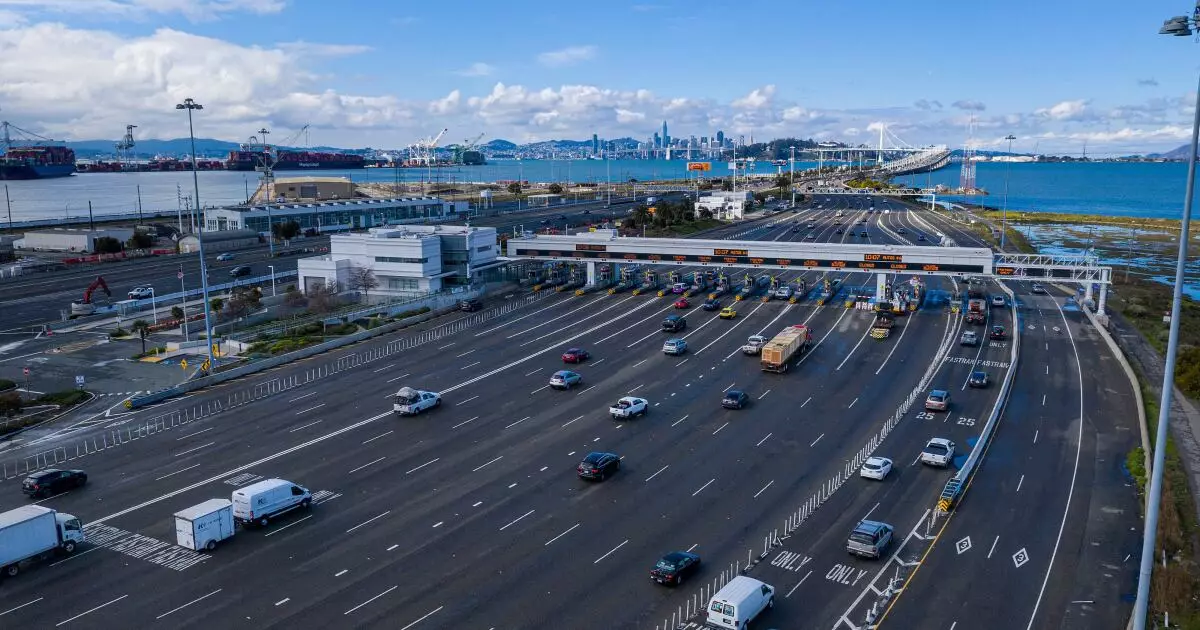As we navigate the complexities of modern infrastructure, it’s abundantly clear that our traditional means of funding transportation—primarily through gas taxes—are failing to meet rising demands. Recent data reveals that two-thirds of U.S. states are actively pursuing alternative funding mechanisms for their transportation needs. The American Road and Transportation Builders Association has reported a significant influx of transportation funding bills, with 37 states introducing about 130 measures just in the early part of the year. This demonstrates a vital acknowledgment that the status quo is insufficient, particularly in the context of an evolving automotive landscape dominated by electric and fuel-efficient vehicles.
There’s a paradox here: while we are moving towards greener alternatives and reducing our reliance on traditional gas-powered vehicles, the infrastructure that supports this innovation struggles to fund itself. As states look for new revenue sources to avert a transportation crisis, creative solutions like tolling are gaining ground, igniting fierce debates across the political spectrum.
Controversial Measures and Public Response
One of the most contentious developments has been the passage of a bill in Indiana that permits tolling on all interstate highways. This measure is emblematic of a broader trend where states are looking for user-based revenue streams rather than relying on general tax funds. Supporters argue that funding roads through user fees is inherently fair; those who utilize the roads should directly contribute to their upkeep. However, this reasoning raises important questions about accessibility and fairness. For many residents, tolls could put additional financial strain on already limited budgets, particularly in less affluent areas.
The rhetoric employed by proponents of this measure consistently revolves around the concept of ‘user pays,’ yet how user-friendly is this model for the average citizen? If tolls increase transportation costs, are we inadvertently placing a burden on lower-income communities that rely on their vehicles for work and daily life? It’s an uncomfortable juxtaposition that calls for poignant examination of who truly benefits from such legislation.
Exploring Broader Trends in Transportation Funding
The push for alternative funding mechanisms has not only been limited to Indiana; states like Maryland are exploring a variety of new taxes and fees aimed at generating substantial revenue—an estimated $500 million for fiscal year 2025-2026. North Carolina is toying with innovative borrowing measures, while Virginia has joined the fray with plans for a $1 billion revenue bond. This notable activity suggests a collective acknowledgment of the urgent need for sustainable funding solutions, but it also brings to light the potential pitfalls of borrowing against future revenue without a solid plan for fiscal responsibility.
Moreover, the introduction of bills to impose fees specifically on electric vehicles illustrates an emerging recognition that the gas tax model is rapidly becoming outdated. The current iteration of the Fair Share Act aims to ensure that electric vehicles contribute to the Highway Trust Fund—an admirable goal, but a complicated one to implement. As we weigh the pros and cons of charging EV drivers, we must remain vigilant to ensure that these new fees do not amplify existing inequities in access to transportation.
The Path Forward: Legislative Agendas and Public Engagement
Legislators are acutely aware that the discussion surrounding transportation funding cannot be an isolated one. Public engagement is critical in navigating this complex landscape. As states push forward with these measures, it’s essential for citizens to remain informed and involved. Transparency regarding the financial implications of these bills and the allocation of funds is crucial if we are to build a consensus around these changes.
We can’t ignore the rising political divide around infrastructure funding, which complicates bipartisan efforts to address our transportation challenges. Many conservatives advocate for user fees as a more direct method of accountability for transportation expenditures, while progressives often focus on ensuring equal access for all segments of society. The intersection of these perspectives is where innovative, blue-sky thinking will be necessary to devise solutions that bridge the gap and create a truly inclusive funding model.
As we embark on this journey towards reinventing transportation funding, it’s essential that we view these developments not just as reactive measures to a failing system, but as forward-thinking transformations that align our infrastructure with the values of equity, efficiency, and environmental sustainability. The coming years will test political resolve and civic engagement as we confront the urgent need for change in how we fund the roads we all depend upon.

